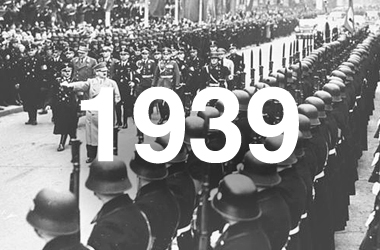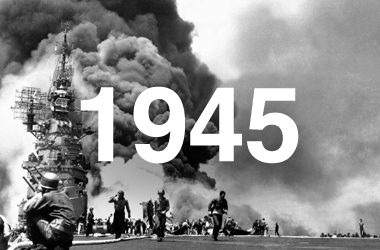World War II History Books 1942
March 11, 1942: General Douglas MacArthur Escapes Philippines
Based in Australia with inadequate supplies and no ground support, the squadron's pilots and combat crew endured tropical diseases while confronting numerically superior Japanese forces. Yet the outfit, dubbed the Kangaroo Squadron, proved remarkably resilient and successful, conducting long-range bombing raids, carrying out armed reconnaissance missions, and rescuing General MacArthur and his staff from the Philippines.
Before now, the story of their courage and determination in the face of overwhelming odds has largely been untold. Using eyewitness accounts from diaries, letters, interviews, and memoirs, as well as Japanese sources, historian Bruce Gamble brings to vivid life this dramatic true account.
But the Kangaroo Squadron's story doesn't end in World War II. One of the squadron's B-17 bombers, which crash-landed on its first mission, was recovered from New Guinea after almost seventy years in a jungle swamp. The intertwined stories of the Kangaroo Squadron and the "Swamp Ghost" are filled with thrilling accounts of aerial combat, an epic survival story, and the powerful mystique of an invaluable war relic.
World War II changed the course of history. Douglas MacArthur changed the course of World War II. Macarthur at War will go deeper into this transformative period of his life than previous biographies, drilling into the military strategy that Walter R. Borneman is so skilled at conveying, and exploring how personality and ego translate into military successes and failures.
Architect of stunning triumphs and inexplicable defeats, General MacArthur is the most intriguing military leader of the twentieth century. There was never any middle ground with MacArthur. This in-depth study of the most critical period of his career shows how his influence spread far beyond the war-torn Pacific.
A Finalist for the Gilder Lehrman Prize for Military History at the New York Historical Society
April 9, 1942: Bataan Death March Begins
Florence was an unlikely warrior. She relied on her own intelligence and fortitude to survive on her own from the age of seven, facing bigotry as a mixed-race mestiza with the dual heritage of her American serviceman father and Filipina mother.
With a wealth of original sources including taped interviews, personal journals, and unpublished memoirs, The Indomitable Florence Finch unfolds against the Bataan Death March, the fall of Corregidor, and the daily struggle to survive a brutal occupying force. Award-winning military historian and former Congressman Robert J. Mrazek brings to light this long-hidden American patriot. The Indomitable Florence Finch is the story of the transcendent bravery of a woman who belongs in America's pantheon of war heroes.
August 7 – February 9, 1942: Guadalcanal Campaign
From early August until mid-November of 1942, US Marines, sailors, and pilots struggled for dominance against an implacable enemy: Japanese soldiers, inculcated with the bushido tradition of death before dishonor, avatars of bayonet combat -- close-up, personal, and gruesome. The glittering prize was Henderson Airfield. Japanese planners knew that if they neutralized the airfield, the battle was won. So did the Marines who stubbornly defended it.
The outcome of the long slugfest remained in doubt under the pressure of repeated Japanese air, land, and sea operations. And losses were heavy. At sea, in a half-dozen fiery combats, the US Navy fought the Imperial Japanese Navy to a draw, but at a cost of more than 4,500 sailors. More American sailors died in these battles off Guadalcanal than in all previous US wars, and each side lost 24 warships. On land, more than 1,500 soldiers and Marines died, and the air war claimed more than 500 US planes. Japan's losses on the island were equally devastating -- starving Japanese soldiers called it "the island of death."
But when the attritional struggle ended, American Marines, sailors, and airmen had halted the Japanese juggernaut that for five years had whirled through Asia and the Pacific. Guadalcanal was America's first major ground victory against Japan and, most importantly, the Pacific War's turning point.
Published on the 75th anniversary of the battle and utilizing vivid accounts written by the combatants at Guadalcanal, along with Marine Corps and Army archives and oral histories, Midnight in the Pacific is both a sweeping narrative and a compelling drama of individual Marines, soldiers, and sailors caught in the crosshairs of history.
November 1942: Operation Torch in North Africa
In November 1942, as a part of Operation Torch, 33,000 American soldiers sailed undetected across the Atlantic and stormed the beaches of French Morocco. Seventy-four hours later, the Americans controlled the country and one of the most valuable wartime ports: Casablanca.
In the years preceding, Casablanca had evolved from an exotic travel destination to a key military target after France's surrender to Germany. Jewish refugees from Europe poured in, hoping to obtain visas and passage to the United States and beyond. Nazi agents and collaborators infiltrated the city in search of power and loyalty. The resistance was not far behind, as shopkeepers, celebrities, former French Foreign Legionnaires, and disgruntled bureaucrats formed a network of Allied spies. But once in American hands, Casablanca became a crucial logistical hub in the fight against Germany -- and the site of Roosevelt and Churchill's demand for "unconditional surrender."
Rife with rogue soldiers, power grabs, and diplomatic intrigue, Destination Casablanca is the riveting and untold story of this glamorous city--memorialized in the classic film that was rush-released in 1942 to capitalize on the drama that was unfolding in North Africa at the heart of World War II.
By clicking ‘Sign Up,’ I acknowledge that I have read and agree to Hachette Book Group’s Privacy Policy and Terms of Use
Explore More World War II History Books











